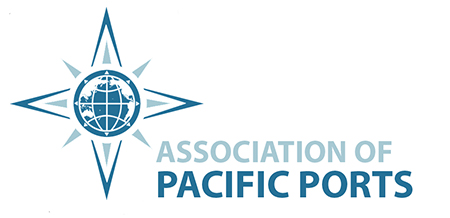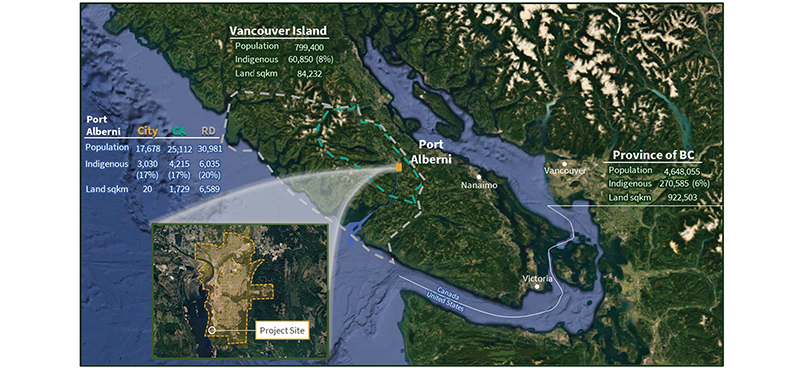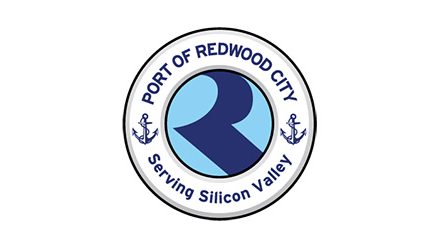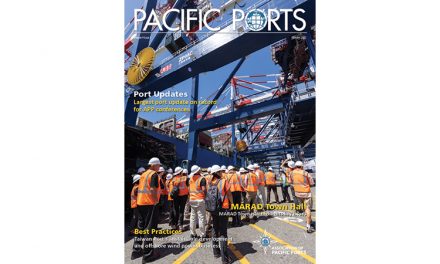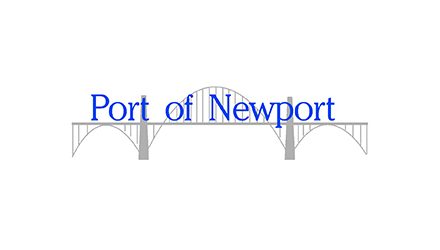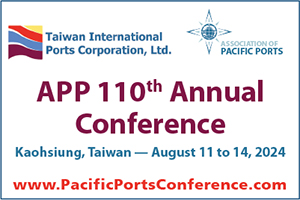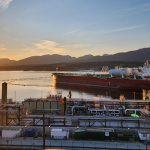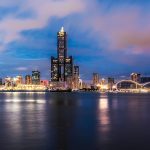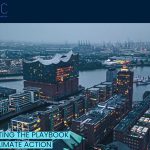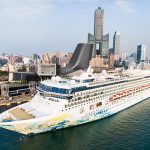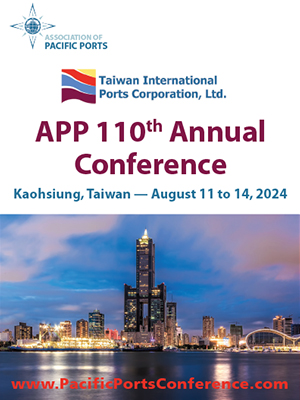From the January issue of Pacific Ports Magazine…
Historically, the City of Port Alberni relied heavily on British Columbia’s forest industry as a mainstay of economic growth. As a shift in that industry saw the beginnings of a decline in port activity, the Port Alberni Port Authority (PAPA) reacted by investigating and placing greater focus on the development of a more diverse maritime industry. Recent new businesses that have been welcomed by Port Alberni, including seafood processors and a bottled water exporter, have improved the market for yet another maritime sector — that of ship building and repair. “As more and more marine businesses call Port Alberni home, the need for expanded facilities to service vessels is a natural next step,” said Zoran Knezevic, CEO for PAPA, adding that the proposal for a floating dry dock aligns with a number of current government and industry goals.
Knezevic wasn’t the only one who was implementing actions in response to the changing landscape. Canadian Maritime Engineering (CME) established operations in Port Alberni in 2013 to take advantage of the increase in vessel activity in the area, including commercial fishing vessels, recreational boats, ferries, and naval and coast guard vessels. Now, realizing the full potential of Port Alberni’s “middle-of-the-coast” location in British Columbia, CME and PAPA, supported by local, regional and provincial governments, First Nations, and community and industry stakeholders, have taken the first steps in laying out a business case for a floating dry dock.
Details
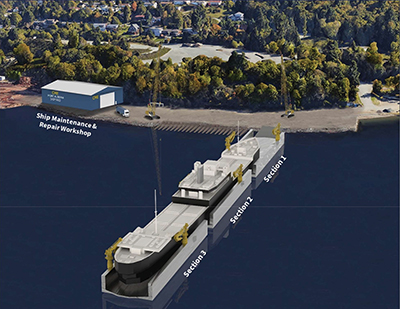 Hired by PAPA, CME, and the Port Alberni Floating Drydock Community Committee, MMK Consulting under-
Hired by PAPA, CME, and the Port Alberni Floating Drydock Community Committee, MMK Consulting under-
took an extensive assessment of the economic impact and benefits as well as the specifics of the project for a floating dry dock in Port Alberni.
Situated on PAPA-administered Provincial foreshore, adjacent to property purchased by CME in 2016 for an expansion of their Port Alberni ship construction and repair facilities, the new floating dry dock would be constructed in three phases: the first section will be between 100 and 110 meters long and 40 to 45 meters wide with a weight capacity of 5,000 metric tonnes; the next phase will see the length and weight capacity doubled with the addition of a similarly sized second section; and in the third stage, the length and weight capacity will again be increased to approximately 300 meters and 15,000 metric tonnes.
Total costs are projected to be just under CD$70 million — CD$30.8 million for Section One; and CD$19 million each for Sections Two and Three — with labour representing just over 60 per cent of total expenditures. While the MMK Consulting study provides for a 4.5-year construction time frame (1.5 years per section), Knezevic noted that it could be completed much quicker if the full project costs were secured. “The ideal plan would be to have each section built successively but be able to use the first section right away to provide for an additional revenue stream,” he said, adding that CME already has a new build order book for smaller vessels that stretches out three years based on current capacity. “They’re using every spare inch of their facilities to build catamarans, tug boats and other commercial vessels. The addition of the floating dry dock would allow them to build more but also much bigger vessels.”
Capacity and customers
With a total 300 meters in length and the ability to accommodate vessels up to 15,000 tonnes (with 24/7 emergency services), the floating dry dock would be one of the largest facilities on the B.C. coast and an attractive option for both Canadian and U.S. vessels. In evaluating the market, MMK Consulting found that the facility would be suitable for even the largest ships in the BC Ferries fleet as well as those of the Canadian Royal Navy, Canadian Coast Guard, and a vast array of Canadian and American fishing vessels, barges, tugs, oil spill response vessels, tourism ferries and, potentially, cruise ships and LNG-related projects.
“Port Alberni’s geographic location does not present any access concerns for BC Ferries or other fleets,” said Knezevic. “Indeed, BC Ferries sees having good availability of B.C.-based dry dock services as being strategically important and views the West Coast marine industry as being under-served by existing facilities.”
Knezevic’s comment is backed up by a recent study by KPMG for the Association of BC Marine Industries. Findings from the study confirmed that “B.C.’s marine infrastructure is insufficient to fulfill increased demand for ship refit and repair services. Specifically, there is a critical shortage, in British Columbia, of dry docks able to accommodate larger vessels (over 1,000 tons)…To exacerbate the infrastructure shortages, demand is expected to continue to rise as a result of increasing marine traffic from the Pacific Rim.” (Source: BC Industrial Marine Sector Economic Impact Analysis and Subsector Assessment Report, August 2020)
Another key consideration that bodes well for the project is Canada’s commitment to spend $2 billion on northern development and passage. “The facilities at Port Alberni, including the floating dry dock, will become the terminus and anchor for this initiative given that there is no clear plan or place to give the North their needed working yards,” said CME President Tony Kennedy. “Future development in the North will be built by modular construction. Also, the mechanical and structural demands of the vessels and barges required for this development will need to be provided by companies like CME.”
 Economy and labour
Economy and labour
The business case for CME’s floating dry dock in Port Alberni is compelling when considering the potential impact on local, regional, and national economies as well as the opportunities for skills training and meaningful employment.
During construction, the employment impact is estimated at 527 person-years, including direct employment of 360 and indirect/induced employment of 167 with a total GDP estimated at CD$66.5 million. Given the labour-intensive nature of the project, more than 85 per cent of the employment is projected to be in B.C., mostly in Port Alberni and nearby communities. For the Port Alberni area, the economic impacts are equivalent to a nine per cent reduction in the number of people unemployed; a two per cent increase in total employment income; and a one per cent increase in average employment income levels. The total economic output associated with the construction project is estimated at CD$95.5 million in Canada with an estimated GDP impact of CD$66.5 million. Labour income is estimated at CD$62.7 million and tax revenues are estimated at CD$8.6 million.
When operations begin, the dry dock is expected to provide direct employment of 68 during its first full year of operation, mostly for Port Alberni residents. When indirect and induced impacts are factored in, total first-year employment is estimated at 140. Looking over a 30-year time frame, total economic impacts are estimated at CD$1.2 billion in output, CD$605 million in GDP, CD$374 million in labour income, and CD$36 million in tax revenues.
Perhaps one of the most appealing arguments to community and government stakeholders is how the project carefully considers the opportunities for women, youth, and Indigenous peoples. “Our First Nations community, making up 17 per cent of our population, has been very supportive of the initiative,” said Knezevic. “The project recognizes, and builds in, meaningful steps toward reconciliation efforts and to provide skills training that will offer life-long careers, something that’s very important for both the Port and the City.” For example, CME and North Island College are currently developing a welding training program in Port Alberni, which would provide for 16 locally based Indigenous men and women. The five-month training course would lead to welding apprenticeship positions working on the dry dock construction.
In addition, the new facility will create direct and indirect employment opportunities for younger community members, helping to reverse trends of an outflow of young people away from Port Alberni in search of meaningful employment and career opportunities. In total, up to 320 new training and apprenticeship positions in welding would be created during the first 20 years of the program. Potential training programs that could also be delivered by North Island College, should the project go ahead, include millwright and heavy equipment repair training as well as a number of related marine training courses that have been traditionally offered further up-island but could potentially be established in Port Alberni.
Environmental sustainability
In addition to the benefits of more meaningful employment that will be realized for the Port Alberni area — and thus improving the quality of life for many, often marginalized segments of the community, CME’s dry dock tackles a number of environmental issues. At its most basic, the proposed site for the facility is a brownfield property which CME has committed to remediating and rehabilitating. Once in operation, the dry dock will not only be providing the type of maintenance, repair and refit services that will help vessels to operate in a cleaner and more environmentally sustainable manner, it will also have great potential use in terms of managing emergency environmental response situations, a possibility that CME has already started exploring. And, recognizing the importance of on-site environmental best practices, CME would join with PAPA in participating in the Green Marine Certification Program.
Next steps
With CME ready to start construction, two important steps are now the focus for them, PAPA, and the Port Alberni Floating Drydock Community Committee. “We are currently working to secure a long-term water lot lease for the facility,” said Knezevic. “Water lots and foreshore in Port Alberni are managed through an agreement with the provincial government. Our current agreement expires in 2023 but we are working now to secure the agreement for an additional 25 years — a requirement from financial institutions to allow CME to secure financing.”
The funding formula currently being considered calls for 25 per cent private sector funding and the remainder to come from public sources — municipal, regional, provincial, and federal. “We have been engaged with both provincial and federal government agencies and have received a very enthusiastic response,” said Knezevic. Indeed, in early October, just before winning the majority in B.C.’s provincial election, Premier John Horgan, committed to launching a long-term shipbuilding strategy, including strategic investments in repair, maintenance, and refit. “Our long-term strategy is about making strategic investments that will keep B.C. shipyards modern and competitive, able to win more contracts and create more jobs.”
In addition to the Premier’s specific commitment to the shipbuilding sector, a $1.5 billion economic stimulus package from the provincial government could also provide a source for Port Alberni’s plans.
Discussions with federal government representatives have also gone well but, noted Knezevic, as is typical for federal funding, they require confirmed support from provincial agencies before committing.
With CME, PAPA and the Floating Drydock Community Committee all working toward securing funding, the odds are in their favour for a successful outcome.
